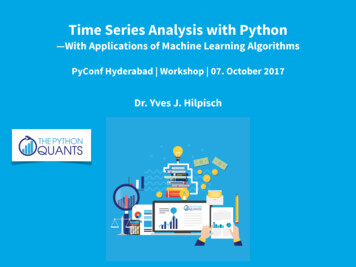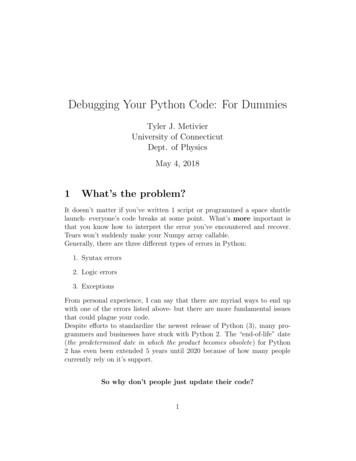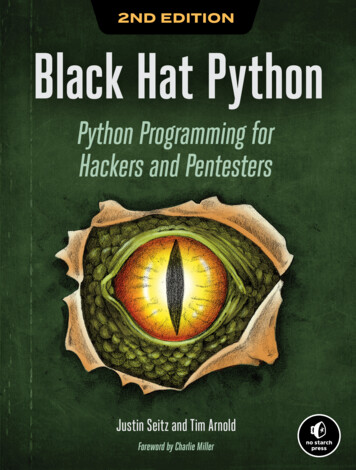
Transcription
Time Series Analysis with Python—With Applications of Machine Learning AlgorithmsPyConf Hyderabad Workshop 07. October 2017Dr. Yves J. Hilpisch
Introduction
http://tpq.io
http://pqp.io
http://hilpisch.com
http://books.tpq.io
http://certificate.tpq.io
Link to Study Plan
PyConf Hyderabad 50% SpecialSign up for 109 EUR (instead of 219 EUR)under http://hydpy.tpq.io (valid 72 hours)http://pyalgo.tpq.io
http://hilpisch.com/bcioo tpq.pdf
http://hilpisch.com/tpq silicon review.pdf
Machine Learning & Algorithmic Trading
machine & deep learningdataoptimization,training thmic tradingprediction(“self-driving car”)automationtrading(“money makingmachine”)
Agenda
TOPICS FOR TODAY1.2.3.4.5.6.7.8.Reading Financial Time Series Data with pandasWorking with pandas DataFrame objectsFormulating a Financial Trading StrategyVectorized Backtesting of the Trading StrategyGetting More Realistic by Considering Bid-Ask SpreadRandom Walk HypothesisPrediction based on Classification AlgorithmOut-of-Sample Performance of Fitted Model
Interactive style as a major element“Making mistakes together.”
Skill-based workshop approachFrom Anders Ericsson (2016): Peak — Secrets from the New Science of Expertise.The Booley Head, London.“When you look at how people are trained in the professional and businessworlds, you find a tendency to focus on knowledge at the expense of skills.”“. I believe the best approach will be to develop skills-based training programsthat will supplement or completely replace the knowledge-based approachesthat are the norm now in many places. The strategy acknowledges that becausewhat is ultimately most important is what people are to do,training should focus on doing rather than on knowing.”
The Gist
he8
The Data
We work with EOD data for the EUR/USD rateData Source: FXCM Financial Capital Markets Ltd.http://hilpisch.com/eurusd.csv
The Benchmark Caseof Random Walks
“For many years, economists, statisticians, and teachers of finance have beeninterested in developing and testing models of stock price behavior. One importantmodel that has evolved from this research is the theory of random walks. This theorycasts serious doubt on many other methods for describing and predicting stock pricebehavior—methods that have considerable popularity outside the academic world.For example, we shall see later that, if the random-walk theory is an accuratedescription of reality, then the various “technical” or “chartist” procedures forpredicting stock prices are completely without value.”Eugene F. Fama (1965): “Random Walks in Stock Market Prices”.
“A market is efficient with respect to an information set S if it is impossible to makeeconomic profits by trading on the basis of information set S.”Michael Jensen (1978): “Some Anomalous Evidence Regarding Market Efficiency”.
If a the price of a financial instrument follows a(simple) random walk(no drift & normally distributed returns),then it rises and falls withthe same probability of 50% (“toss of a coin”).In such a case,the best predictor of tomorrow’s stock price—in a least-squares sense—is today’s stock price.
The Python Quants GmbHDr. Yves J. Hilpisch 49 3212 112 9194http://tpq.io team@tpq.io@dyjh
From Anders Ericsson (2016): Peak — Secrets from the New Science of Expertise. The Booley Head, London. “When you look at how people are trained in the professional and business worlds, you find a tendency to focus on knowledge at the expense of skills.” “. I believe the best a











